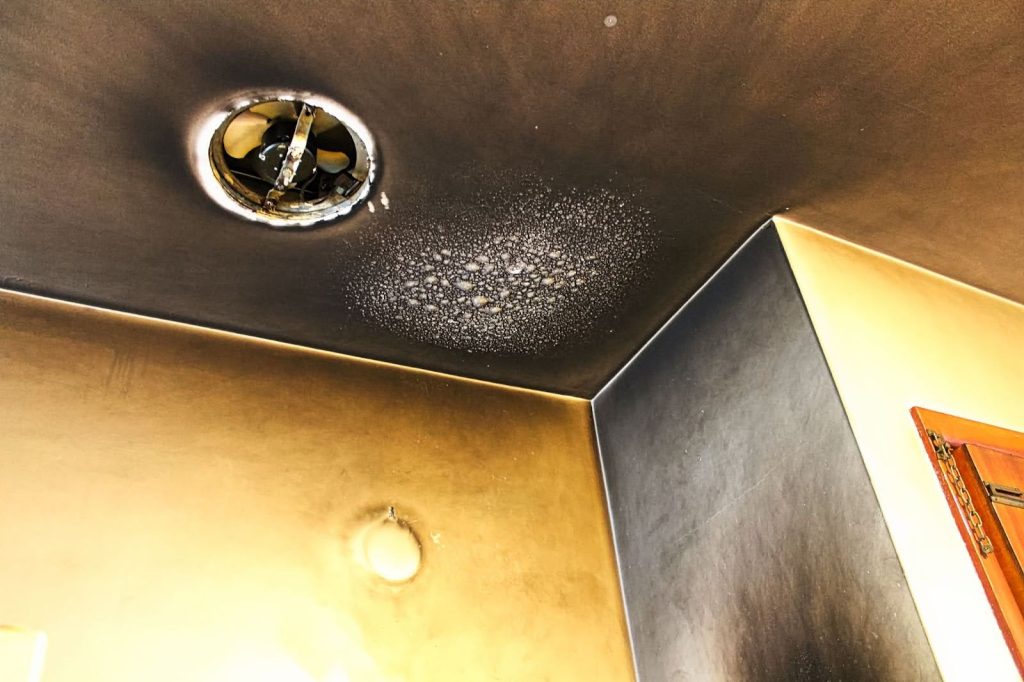When disaster strikes in the form of a fire, the aftermath can be overwhelming. The destruction left in its wake goes far beyond the visible charred remains and smoke-stained walls. Fire damage is a complex issue that affects buildings, personal belongings, and even the health of those exposed to its effects.
Recognizing the different types of fire damage is crucial for effective prevention, response, and restoration. From the intense heat that warps structures to the corrosive residues that linger long after the flames are extinguished, each aspect of fire damage presents unique challenges.
This article dives into the multifaceted nature of fire damage. We will explore its different forms and the far-reaching consequences that can persist long after the emergency responders have left the scene.

Types of Fire Damage
What kind of damage does fire cause? Fire damage can be devastating, affecting homes and businesses in various ways. Direct fire damage destroys structures through flames, while smoke damage leaves behind stains, odors, and toxic residue. Water damage from firefighting efforts can lead to mold or structural weakening.
Additionally, heat damage warps or melts materials, and chemical damage corrodes surfaces due to harmful substances released during a fire. Electrical damage can occur from compromised wiring, creating further hazards. Understanding these damage types is crucial for proper restoration and recovery.
Direct fire damage
Direct fire damage is the most visible and immediate effect of a fire, including both structural and surface damage. Structural damage impacts core building elements like walls, ceilings, and support beams, often compromising safety and requiring professional repairs.
Surface damage involves the charring and burning of visible areas, such as flooring, walls, and furniture. This damage ranges from light scorching to complete destruction, typically needing cleaning or replacement based on severity.
Immediate assessment and repairs are crucial to prevent further deterioration and ensure the building’s safety. Addressing both types of damage promptly can help mitigate long-term issues.
Smoke damage
Smoke damage can be more extensive than the fire damage itself and affect areas far from the flames. It leaves visible soot and residue on surfaces, including walls, ceilings, and furniture, which can cause permanent staining if not cleaned properly.
Smoke also leaves a persistent odor that penetrates porous materials like carpets and upholstery, often requiring specialized treatments to remove. Additionally, smoke can infiltrate hidden areas such as behind walls and in HVAC systems, necessitating thorough inspection and cleaning to prevent long-term health issues.
Addressing smoke damage promptly is essential to prevent further deterioration and ensure a safe, habitable environment. Professional restoration services can effectively manage both visible and hidden smoke damage.

Water damage
Water used to extinguish fires can cause significant damage. Firefighting efforts often leave walls, floors, and furniture soaked, potentially leading to mold growth and structural damage if not addressed quickly.
In buildings with sprinkler systems, water damage can be widespread. A fast response is essential to minimize further issues. Left untreated, water can seep into hidden areas, worsening structural integrity and promoting long-term moisture problems. Quick drying, cleanup, and professional assessment are crucial to prevent lasting harm and costly repairs.
Moisture in insulation and behind walls can lead to poor indoor air quality and health risks if not properly mitigated. Professional water damage restoration services are essential to thoroughly dry and dehumidify affected areas, preventing future complications.
Heat damage
Heat from fires can cause damage even without direct flame contact. Intense heat can warp metals, melt plastics, and crack glass, often requiring replacement of materials. Radiant heat can damage areas at a distance, scorching paint, damaging electronics, and cracking windows. Prolonged exposure to heat may also weaken structural components, even if they aren’t directly burned.
Heat-damaged surfaces can lead to long-term deterioration if not properly assessed and repaired. Damaged electronics pose electrical risks, requiring careful inspection.
Prompt professional evaluation is essential to address both visible and hidden heat-related damage. Addressing these issues quickly can prevent further structural weakening and safety hazards.
Chemical damage
Fires can introduce harmful chemicals into the environment. Fire retardants and extinguishing agents often leave residues that require specialized cleaning. Combustion byproducts like acidic soot and toxic gasses can cause ongoing damage and pose health risks if not properly addressed.
Prolonged exposure to these chemicals can lead to respiratory issues and skin irritation. Contaminated surfaces may continue to deteriorate if left untreated, affecting structural integrity and indoor air quality.
Cleaning up after a fire requires professional services to safely remove hazardous substances and restore the affected area. Specialized air purification and decontamination techniques may also be necessary to ensure a safe living environment.
Electrical damage
Fires often cause significant damage to electrical systems. Fire-induced short circuits can burn wiring and damage electrical panels, requiring professional repair. Power surges from fires can damage electronics and appliances, even in areas not directly affected by flames.
Prolonged exposure to high heat can also weaken or degrade electrical components, leading to potential future hazards. Proper assessment of electrical damage is crucial, as faulty wiring or damaged panels can pose serious safety risks, including fire hazards.
Specialized repair and replacement by licensed electricians are essential to ensure the electrical system is safe and fully restored. Regular inspections and maintenance are recommended to prevent recurrence and ensure long-term safety.

Conclusion
Fire damage encompasses a wide range of destructive effects, each presenting unique challenges for recovery and restoration. The aftermath of a fire is complex, including damage from fire, smoke, water, heat, chemicals, and electrical issues. Understanding these types of fire damage is crucial for effective prevention, response, and restoration efforts.
Property owners and professionals must recognize that fire damage extends beyond visible destruction. It often involves hidden dangers that can persist long after the flames are extinguished.
Thorough assessment, precise cleaning, and restoration are crucial for safety and to prevent lasting damage. Addressing fire damage expertly and attentively aids in effective recovery, fostering safer, resilient spaces ahead.


